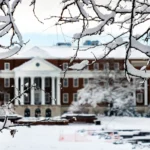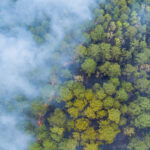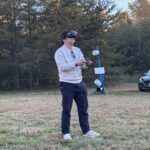ESSIC researcher Anand K. Ramanathan attended the American Geophysical Union 2015 Fall Meeting and presented the latest results from the NASA Goddard CO2 Sounder lidar instrument flown in the NASA ASCENDS 2014 field campaign. The results included the first comparisons of airborne lidar CO2 measurements with global CO2 models. Lidar measured spatial gradients of carbon dioxide and water vapor (an additional capability of the instrument) were found to agree well with model predictions. Comparisons for one flight where conditions were stable showed a 0.88 correlation between the measurements and the model.





